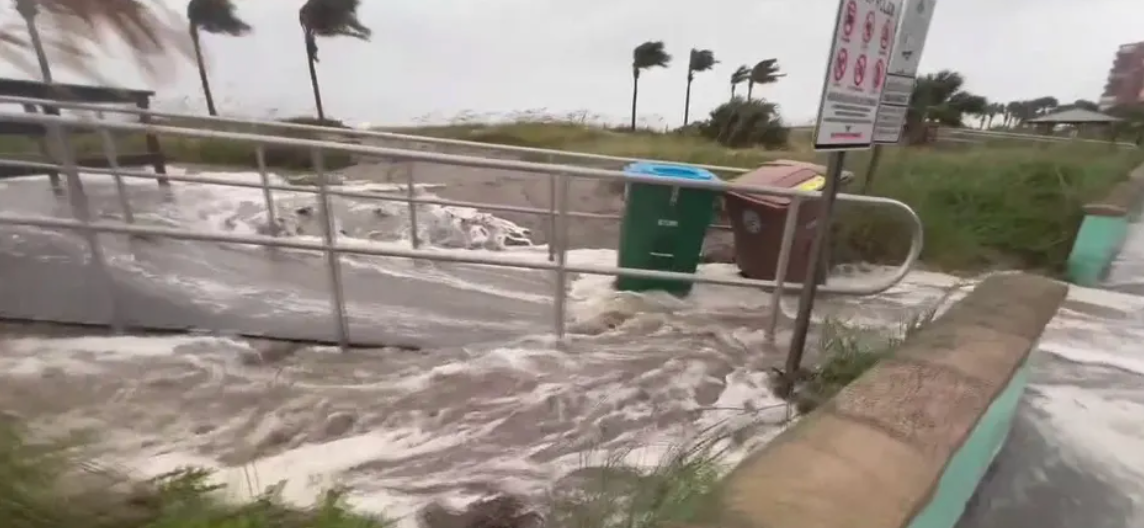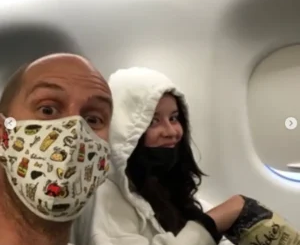Donna Fagersten had taken refuge at a friend’s home on the top floor as Hurricane Helene tore through northern Florida, leaving a devastating trail of destruction and more than 100 casualties in the southeastern U.S.
As the storm appeared to calm, the 66-year-old teacher, just days away from her retirement, made a fateful choice to return home to rescue her cat.
When Hurricane Helene hit Florida on September 26, 2024, around 11 p.m., the Category 4 storm triggered flash floods, forcing residents to scramble for safety. One of the hardest-hit areas was Pinellas County, particularly in the Tampa Bay region, where at least 11 people lost their lives.

Among the victims was Donna Fagersten, a second-grade teacher from Ponce De Leon Elementary in Pinellas County.
According to her best friend Heather Anne Boles, Donna was set to retire the following week after dedicating 35 years to teaching. When the storm hit, Donna sought shelter with Boles and her partner, Mike Moran. As the storm surge rushed in, they retreated to the third floor of Boles’ mother’s home, across from the beach where Donna lived.
Boles recalled that as the storm seemed to settle, Donna insisted on going home to check on her cat, despite Boles’ pleas to stay. Tragically, another surge and high winds returned, battering the coastline.
A neighbor later came to their shelter, reporting that someone had been found floating in the parking garage. They quickly pulled Donna from the water and began CPR, but despite their efforts and the arrival of fire rescue by boat, they were unable to revive her.
Detectives later confirmed that Donna had drowned in her home, which had been flooded with water.
Family and friends have since remembered Donna as a “beautiful person” who was deeply committed to her students and community. In a Facebook post, Mary Gleason Lyons, a colleague and friend, described Donna as a dedicated teacher with a big heart, touching the lives of many students over her 35-year career.

Online tributes poured in, with former students and friends expressing their sadness at her passing and remembering her kindness and warmth.
While Boles and Moran are now left to clean up after the floods, which destroyed most of their belongings, the loss of their best friend is what hurts the most. “This is the worst we have ever seen,” Boles said, reflecting on the storm’s destruction compared to Hurricane Irma, where they managed to keep their home and belongings intact.
On a positive note, Donna’s cat survived, and her friends are working to find him a new home.
Hurricane Helene, which cut a destructive 800-mile path northward, left more than 2 million homes without power and claimed over 100 lives, according to USA Today.
At 74, Jay Leno Prepares for the Inevitable, Sets Aside Fortune for His Cars — ‘No One Lives Forever

After leaving behind his successful career as the host of late-night talk shows, Jay Leno launched a web series on nbc.com (2015 to 2022) about cars.
Jay Leno’s Garage, now appearing to more than 3.7 million subscribers on YouTube, allows the comedian to share his passion for cars and bikes with his audience.

In November 2022, the former Tonight Show host was badly burned when a fire broke out in his Burbank, California garage.
“I got some serious burns from a gasoline fire.” Leno told Variety at the time “I am OK. Just need a week or two to get back on my feet.”
According to reports, the now 74-year-old man was working under a car when the fire sparked. He suffered third degree burns on his face and got a new left ear after losing his first one to the fire.
Unfortunately, his luck didn’t get any better.

Only two months after the fire, he suffered a broken collarbone, two cracked ribs and two cracked kneecaps in a motorcycle accident.
‘Treats Mavis like gold’
Despite his body breaking down with aging, passion-related accidents and high cholesterol, the one thing that holds strong in his life is his love for Mavis, who he married in 1980.
“I always tell guys when they meet a woman, ‘Marry your conscience. Marry someone who’s the person you wish you could be and it works out okay.” Leno tells People of his enduring love with Mavis, now 77.

After 45 years together, the childless couple started facing some hardships.
Mavis was diagnosed with dementia and her condition is rapidly declining.
In April 2024, Leno was granted a conservatorship over his wife’s estate by a Los Angeles Superior Court judge who ruled the measure was “necessary and appropriate.”
According to court documents obtained by Entertainment Tonight, “Mavis has been progressively losing capacity and orientation to space and time for several years.”
The filing also says and “Jay is fully capable of continuing support for Mavis’ physical and financial needs, as he has throughout their marriage,” but her “current condition renders her incapable of executing the estate plan.”

Included in the documents is a statement from her neurologist Dr. Cohen: “Sometimes [Mavis] does not know her husband, Jay, nor her date of birth.”
Cohen, Mavis’ attending doctor at Cedars Sinai, adds that Leno “loves his wife very much” and “treats [Mavis] like gold.”
‘No one lives forever’
Only months later, In Touch reports that Leno is now preparing for his own death, making end-of-life arrangements so his fortunes are delivered to the rightful beneficiaries.
The filing reads: “No one lives forever, and the actions taken by Mr. Leno are reasonable and necessary for his and Mavis’ protection. Mavis does not object to the petition and in my opinion consents to it. Mr. Leno is her protector, and she trusts him. This estate planning is in her best interest and protects her interests.”

Leno’s latest filing details provisions for Mavis’ care and discloses that the couple intends to stay in their home “for as long as reasonably possible,” using their money for “assistance from household employees or caregivers as may be necessary.”
If Leno dies first, “the estate will divide into the Leno Marital Trust…it will have the Leno Collection and any real property housing Leno Collection. It will be irrevocable, and the survivor receives all income, plus principal for reasonable support. After the survivor’s death, after-tax balance will be distributed, along with the Leno Trust to JDM.”
The Leno Collection is Leno’s collection of automobiles and motorcycles, that’s valued at more than $52 million, and any real property.

Leno also instructed the JDM Foundation, a charity he launched in 1988, to open a museum with his automobile collection, and he’s already named the three initial directors.
In addition, Leno is leaving $7 million to Mavis’ brother Rikki Nicholson, who lives next door, and to his nephew Richard Leno.
The court-appointed official said Leno’s amendments to the trust will likely be approved.
It’s hard to imagine a world without Jay Leno! Please let us know what you think and then share this story so we can send Leno and Mavis a lot of love!



Leave a Reply